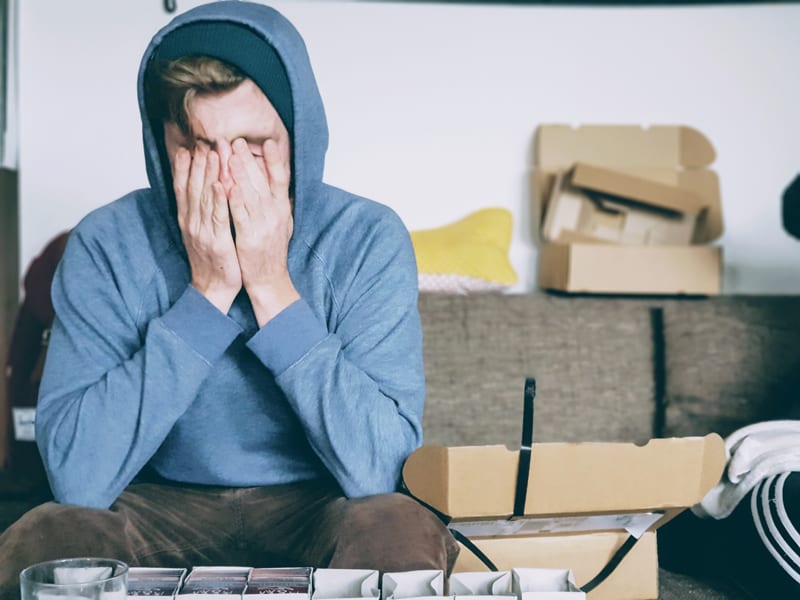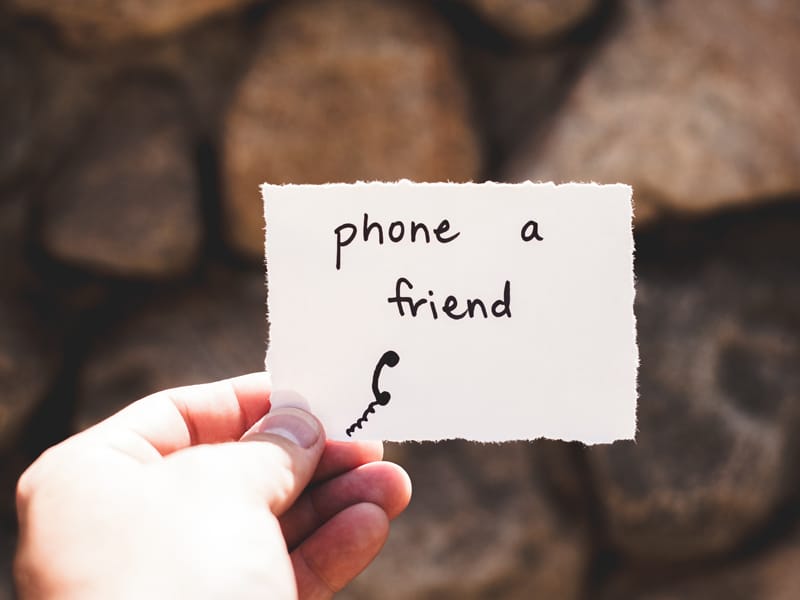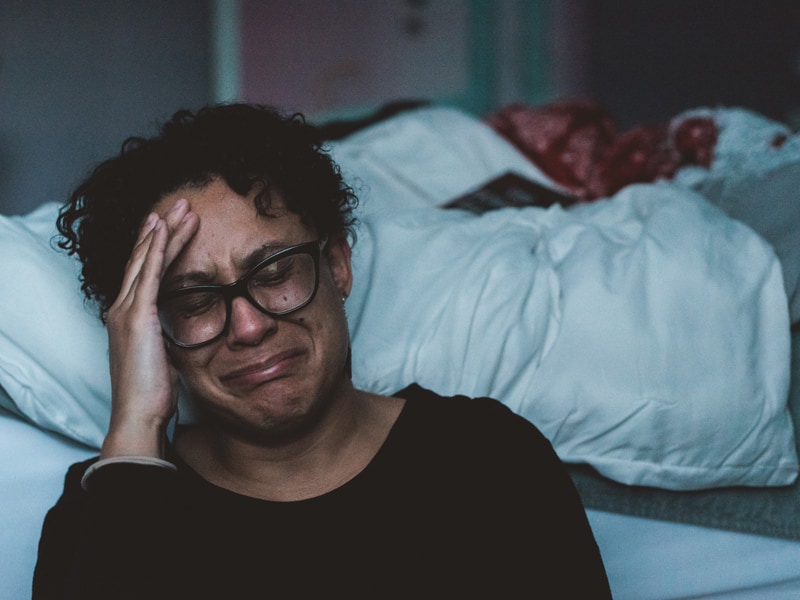“I’m reading all the posts about social distancing and isolating with our ‘happy’ families. But what if the family is not so happy?” asks one of our Mumlyfe readers. What if you are forced into self-isolation at home when home doesn’t feel safe?
“Just going through a really tough time and this bloody virus situation is not helping,” she writes. “What if you really, now more than ever, need to offload a couple of kids to the grandparents in order to shield them from some conflict going on in the home?
“Or, temporarily boot a teenager out to try and create some space between him and a parent because their relationship has broken down so badly, they can barely be in the same room?
“Or a relationship really needs a break before any more damage is done?”
This a really difficult one to tackle. As Tolstoy so succinctly put it in Anna Karenina, “Happy families are all alike; every unhappy family is unhappy in its own way.”
Support is there
Self-isolation when home doesn’t feel safe is a terrifying prospect. Trust your instincts and leave if you need to leave. You can find support here:
- Call 000 if you are in immediate danger
- Australia-wide: The National Sexual Assault, Family & Domestic Violence Counselling Line or 1800RESPECT
- ACT: Domestic Violence Crisis Service (DVCS)
- NSW: Domestic Violence Line
- QLD: DV Connect
- VIC: Safe Steps Family Violence Response Center
- WA: Women’s Domestic Violence Helpline
- SA: Women’s Safety Services
- TAS: Family Violence Response Referral line
- NT: Dawn House
For general family support, including single and co-parenting, contact Relationships Australia.
Families in conflict
Conflict within a family can be between parents, between parents and children, or between siblings. When there is trouble at home – whatever form it may take – home does not feel safe enough to be ‘trapped’ together due to self-quarantine requirements.
“If your family is in conflict and you are self-isolated then it is safe to assume that without a clear plan in place, there is a risk that the conflict within the family will increase and the intensity of emotions associated with the conflict will escalate,” says Donna Cameron, founder and principal psychologist at The Couch.
In a self-isolation situation, the ‘flight’ option in our natural ‘flight, fight or freeze’ response is taken away from a person. Which leaves the fight response a more likely option, even in people who are not usually prone to fighting. Without the option of leaving, the fight response may switch on as the person tries to hold their ground.
Situations can escalate quickly
A person who is prone to resorting to the fight response in general situations may escalate their response. So, even if up until now your partner (or child’s) ‘fight’ response has been verbal, do not assume that it will continue to be the case. “The person will do anything to protect themselves and their opinion,” warns Donna. “This can include screaming, hitting and attacking.”c
It’s extremely important in self-isolation to avoid all situations that could activate the fight or flight response
“It’s extremely important in self-isolation to avoid all situations that could activate the fight or flight response,” says Donna. “Do not take this opportunity while your partner is in the house with you to discuss topics that in the past have created conflict, or that you know will upset the other.”
Instead, “Validate that this self-isolation period is and will be difficult for everyone involved.” While it seems unfair to continue to put the onus of peace keeping on the person at risk, self-isolation is not the time to make changes.

Co-parenting frustration
Co-parenting parents will feel particularly frustrated if required to self-isolate.
We need to put down the boxing gloves and consider the best option for the children
“One of them is going to miss time with their children and this often is a topic of conflict,”” says Donna. “When we are trying to prevent the spread of a virus for the health and safety of our children and ourselves, we need to put down the boxing gloves and consider the best option for the children of co-parenting families.”
Donna recommends having the children self-isolate with the parent they generally spend more time with. “This is not to say the other parent isn’t capable,” reminds Donna. “This is just understanding that our young children need to be with their main attachment parent in time of uncertainty and stress to keep them as relaxed and calm as they can be.”
Family lawyer Rebecca Bunney recommends that parents put their children’s safety first. “Do your very best to put all of your past hurt and concerns about your former partner to one side,” she told ABC News. “Really just focus on where is the best place for your children to be to have their movements limited as much as possible.”
Older children should choose if possible
Older children should be given the option of which parent they want to spend the time with, believes Donna. “This make them feel like they have some control in a situation that is out of their control.”
For the parent that misses out on physical contact with the kids during self-isolation, it’s time to get creative to keep in contact. Make use of Skype and Facetime and regular texts to keep in daily contact. Watch a movie together over Zoom. Help the kids with their homework over Skype. Hang out together over Facetime, just going about your regular daily activities.
To avoid future conflict after self-isolation is over, it’s worthwhile considering offering ‘make up’ time to the parent who misses out on being with the children. “The advice to clients would be make sure the other parent is not missing out on time and they get make-up time,” Rebecca told ABC News. “So if they miss two nights this week then say to them: ‘It is a credit, you will get to spend that time with them once this self-isolation is over.’
“Just remember this is not anybody’s fault, so don’t take your frustration an anger out on the other parent or the children,” says Donna.

Steps to minimise conflict in the home
Have crisis numbers ready next to the phone for if you need them
- Have crisis numbers ready next to the phone for if you need them:
- Call 000 in an emergency
- Call Lifeline on 13 11 14 if you need to talk to someone
- Kids Helpline on 1800 55 1800 for the children
- Consider finding a place other than home to self-isolate, where possible – a friend or other family member might be able to help
- Set up separate areas of the house for everyone to have their own space
- Keep things on an even keel – now is not the time to make changes, increase expectations or rehash old conflicts
- Check your own behaviour – try to remain calm and in control during testing situations, rise above it
- Practise meditation – whether it’s just a few deep breaths to help calm your brain, or being guided through a sequence via an app like Smiling Mind, meditation can help you be gentle with yourself and others during these troubled times
- Stick to a routine that is as close to your regular routine as possible (ie. work hours, school hours, waking and sleeping times, lunch times, etc)
- Use a ‘time out’ strategy – have some alone time in the bedroom, bathroom, backyard, wherever you can go to calm down
- Exercise to release frustration, anger and hurt – depending on your self-isolation mandate, you may still be okay to walk or run around your neighbourhood
Support is out there
- Phone a friend for a chat – a text just won’t cut it during this time of isolation, we need to feel heard
- Contact your mental health professional to arrange a Zoom/Skype session
- Call counselling services like BeyondBlue, Headspace, NAACHO and Relationships Australia when you need someone to talk to
Remember, reach out to friends and family so you don’t feel so alone. They will want to know you are safe and will do their best to help you through this challenging time.
If you, or someone you know, are in crisis and urgently need help, contact Lifeline on 13 11 14 or Kids Helpline on 1800 55 1800. If you are in immediate danger, call 000 right now.
Feature image by Claudia Wolff; boy by Christian Erfurt; phone by Dustin Belt

